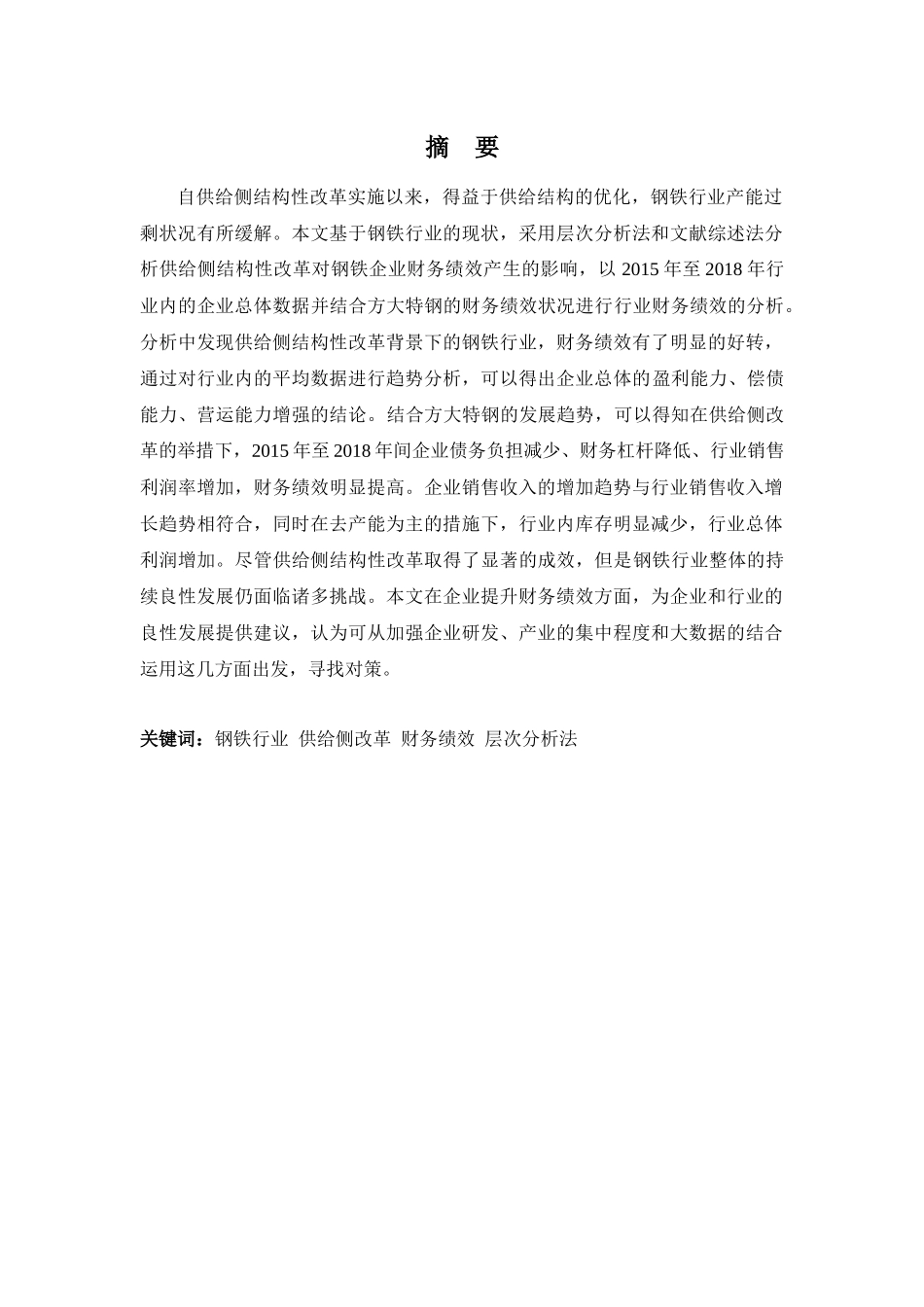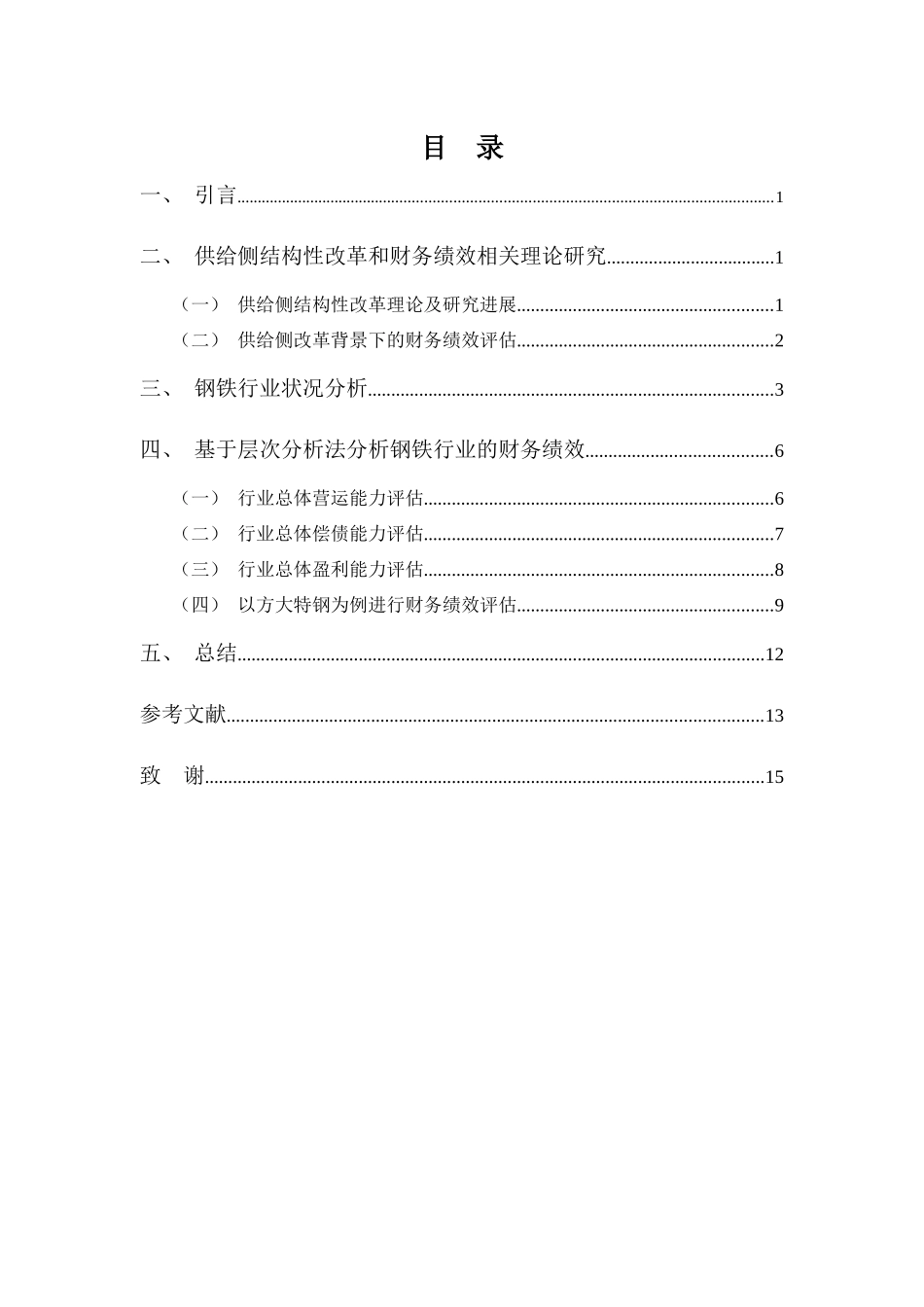摘 要自供给侧结构性改革实施以来,得益于供给结构的优化,钢铁行业产能过剩状况有所缓解。本文基于钢铁行业的现状,采用层次分析法和文献综述法分析供给侧结构性改革对钢铁企业财务绩效产生的影响,以 2015 年至 2018 年行业内的企业总体数据并结合方大特钢的财务绩效状况进行行业财务绩效的分析。分析中发现供给侧结构性改革背景下的钢铁行业,财务绩效有了明显的好转,通过对行业内的平均数据进行趋势分析,可以得出企业总体的盈利能力、偿债能力、营运能力增强的结论。结合方大特钢的发展趋势,可以得知在供给侧改革的举措下,2015 年至 2018 年间企业债务负担减少、财务杠杆降低、行业销售利润率增加,财务绩效明显提高。企业销售收入的增加趋势与行业销售收入增长趋势相符合,同时在去产能为主的措施下,行业内库存明显减少,行业总体利润增加。尽管供给侧结构性改革取得了显著的成效,但是钢铁行业整体的持续良性发展仍面临诸多挑战。本文在企业提升财务绩效方面,为企业和行业的良性发展提供建议,认为可从加强企业研发、产业的集中程度和大数据的结合运用这几方面出发,寻找对策。关键词:钢铁行业 供给侧改革 财务绩效 层次分析法 AbstractSince the supply-side structural reform, thanks to the optimization of the supply structure, the steel industry overcapacity has eased.This is based on the present , which the impact of supply-side structural reform on the financial performance of iron and steel enterprises by AHP and literature review, and analyzes the financial performance of the industry with the overall data of enterprises in the industry from 2015 and connected with the financial performance of Fangda Special Steel. It is found that under the background of supply-side reform has improved obviously. Through the analysis of the average data in it, we can draw the conclusion that the overall profitability, solvency and operation ability of the enterprise are enhanced. Combined with the development trend of Fangda Special Steel, we can know that under the measures of supply-side reform, the ent...












